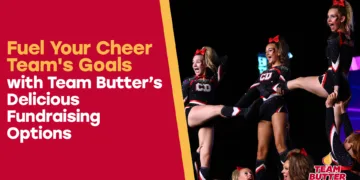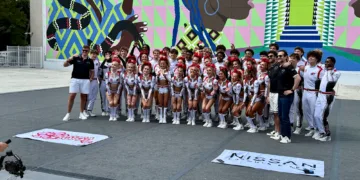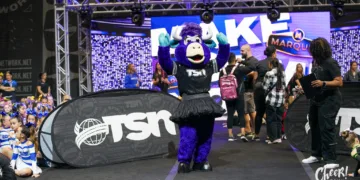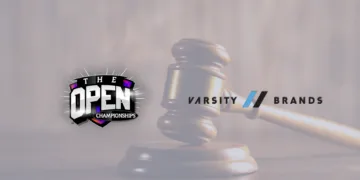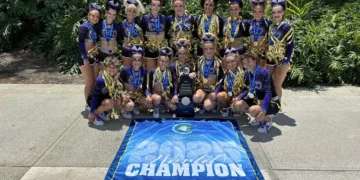At every college game, the cheer team brings energy to the sidelines, leading the crowd and cheering their team to victory. Whether it’s a coed or all-girl squad, the thrill of performing in front of thousands of fans is unmatched. College game day is all about the excitement of tumbling, stunting, and crowd-leading. If you’re dreaming of becoming a college cheerleader, the journey starts now and culminates with tryouts in the spring. Each college has its own timeline and expectations, so it’s essential to research thoroughly and be prepared to meet the requirements.
Choosing the Right College
Selecting the right college is a personal decision that should start with your intended major and career path. Prioritize colleges that offer strong programs in your field of study. Once you have a list of potential schools, research their cheer programs. Some colleges require an admission acceptance letter before you can try out for their cheer team. Ensure you meet academic qualifications before showcasing your athletic abilities.
Game day cheerleading focuses on engaging the crowd with sharp motions, poms, and signs. Teams also perform stunts and pyramids designed to captivate and lead the audience. While traditional football and basketball games are common, some programs also cheer for volleyball and gymnastics. Investigate the specific responsibilities and expectations for each school’s cheer program.
“Do your homework, investigate, and research the school and the program,” advises Annette Laron-Pickett, Cal Poly Mustangs Cheer/STUNT Head Coach and Dance Advisor.
Athleticism and Conditioning
Strength and conditioning are crucial for college cheerleaders, who need the stamina to perform during extended pregame activities and throughout the game. Balancing conditioning, practice, and appearances is key to success. Understand the time commitments involved, including whether the team competes at College Nationals. Effective time management is essential for balancing cheerleading with academic responsibilities.
Attend Clinics and Learn Traditions
Once you have narrowed down your choices, contact the coaches and attend college clinics. Most programs post clinic and visit information online, but it’s vital to reach out directly. Coaches make all decisions regarding team selection, so they need to know as much about your skills and abilities as possible. If available, fill out athlete questionnaires to provide detailed information. If not, introduce yourself via email, outlining your background, experience, and skills.
“This information should come from the cheerleader, not a parent,” says Lori Moses, Former Spirit Coordinator at the University of South Florida.
College tryout clinics are held in the fall and spring, and interested juniors and seniors should attend. These clinics provide insight into the expectations, traditions, and skills required. Each school is different, so attend clinics to understand specific requirements.
“To know what each college is looking for, you need to attend their clinics,” advises Jay Brandon, Assistant Coach/Skills Coach at the University of Tennessee Chattanooga.
Clinics cover traditions like the school’s Fight Song, which you must learn and perform at tryouts. This song is a significant tradition that showcases school pride. Additionally, clinics cover tumbling and stunting skills, and you may need to complete waivers and other paperwork to participate.
Appearance and Presentation
Game day appearance guidelines vary by school, so it’s important to ask specific questions about practice and game day attire. “It is important to look the part at tryouts,” says Moses. Attending multiple clinics at your target schools can help you prepare and make a strong impression.
Executing Clean Skills
College game day cheer requires clean, sharp performances that engage the crowd without distracting from the game. Skills must be executed on non-spring floors or basketball courts, a key difference from all-star cheer. Experience in crowd-leading can be beneficial, as Brandon notes, “An Allstar athlete who has never cheered on the sideline has a disadvantage.”
Checklist for College Tryout Clinics
- Research your favorite college teams:
- What teams do they cheer for?
- How long are the seasons?
- How many practices per week?
- What is the time commitment?
- Do they compete?
- Email the coach with background information and questions.
- Fall and spring tryout clinics:
- What do I need to wear/practice appearance?
- What paperwork do I need to submit or bring?
- How do I register?
- How much does it cost?
- At the clinic:
- How do I learn the Fight Song?
- What are the tumbling requirements?
- What stunts do I need to perform?
- What are the practice, game day, and appearance requirements?
- When are tryouts?
Typical Items Needed for College Tryouts
- Fight Song
- Sidelines
- Standing Tumbling
- Running Tumbling
- Application/Information Form
- Admission letter
- Physical
Insights from a Dedicated Cheer Mom
Dania Strong shares her experience helping her daughter transition from all-star cheer to college cheer:
“It’s tryout season…one of the most stressful times of year in all-star cheer…I felt the need to share my experience in helping my daughter get to her next chapter…college cheer. One thing I didn’t know going in is that your child’s all-star cheer team level really doesn’t matter at all…even the level of their high school squad doesn’t make a huge difference. What matters is skill level and coachability. Even if your gym can only field certain lower-level teams, your athlete can still develop higher-level skills and prepare for the future. Competition experience is experience regardless of level. If college cheer is a goal for your child, here are some things you can do that will help…follow the college cheer programs on Instagram, they hold camps and clinics all the time, you can visit the campus and learn about the program. Don’t wait until their senior year to do this because most clinics are open to freshmen and up. There are top programs that could be a huge reach but also great programs that are successful and challenging too! Always encourage your child to dream and dream BIG, but remember that goal setting and perfection before progression are key. Hard work beats talent when talent doesn’t work hard, and attitude is everything. Work with your child to focus on the things that really matter like teamwork, commitment and positivity.“
Timeline and Important Items
Fall is the time to start attending tryout clinics. Read each college’s website for clinic information, register, and attend. If you lack the necessary skills in the fall, take classes to improve before tryouts. Tryouts typically occur in April and May, often spanning two days. Larger colleges usually require live tryouts, while smaller colleges may accept video submissions. Clarify these details during clinics and communication with coaches.
By following this checklist and preparing thoroughly, you can increase your chances of making your college cheer team and living your dream of cheering on the sidelines.
Don’t forget to attend tryout clinics and reach out to coaches. Stay dedicated, practice hard, and soon you’ll be cheering on the sidelines at your dream college! For more tips and updates, follow us on social media.






